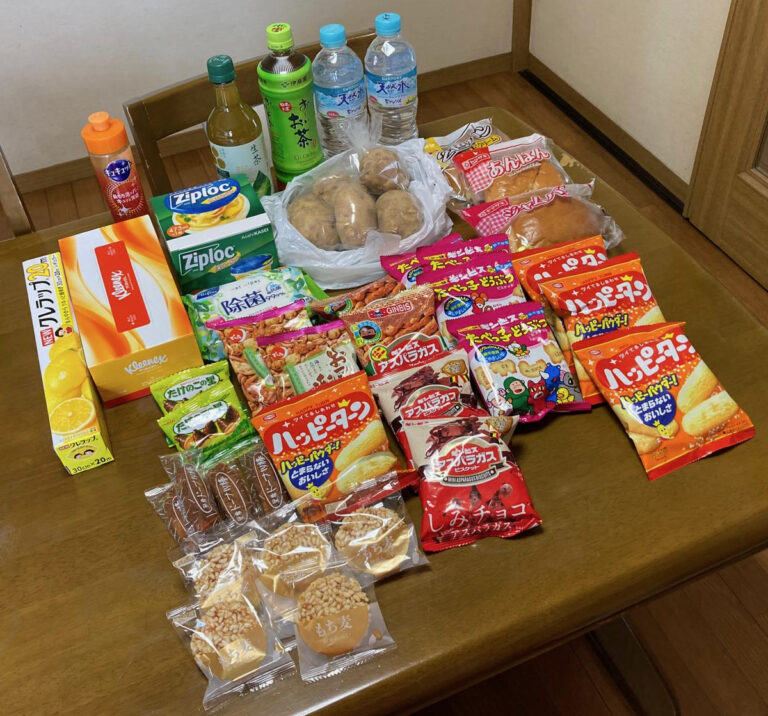The biggest TV gossip of 2011 had to be the sudden resignation of Shinsuké Hamada, who as well as looking a bit like Jimmy Carr, was found to have links with the yakuza. (‘Jimmy Carr Mafia Link Shock!’ – now that would be an interesting story. But anyway, I digress.). Once evidence of his friendship with a minor hoodlum became public, Shinsuké did the honourable thing by jumping before he was pushed, but is unlikely to be welcomed back anytime soon, and as onii-san pointed out, the punters are now a lot less likely to patronise his chain of restaurants for fear of guilt by association.
In the manner of post-Angus Deayton Have I Got News For You, some of Shinsuké’s shows have drafted in guest presenters, among them Koji Higashino, who despite my prediction that his career would be cut short after an on-screen character assassination, has become an even more regular fixture on the panel show circuit.
Higashino’s most notable appearance of 2011 was as a participant in the Sado Island Triathlon, posters for which were all over the place when I was there for my summer holidays. Rather than the usual 1.5km swim / 40km cycle / 10km run, however, the Sado Triathlon involves a 3.8km swim, a 180km cycle and a full, 42km marathon, and while the swim was reduced to 3km because of an approaching typhoon, there can be no shame in the fact that three of the four participating celebs failed to complete the course. (Incredibly, all three – including Higashino – fell short of their goal not because they collapsed from exhaustion, but because they couldn’t keep within the fifteen-and-a-half-hour time limit.)
Both Shinsuké and Higashino cried in public last year – Shinsuké at his resignation press conference and Higashino in the lead-up to the triathlon – and the more Japanese TV I watch, the more I find myself blubbing into my remote control. For example, here’s the scenario for a recent documentary about guide dogs:
Scene 1 – Partially sighted woman in Hokkaido has owned the same guide dog for almost a decade. Dog is due to retire next year. Woman cries.
Scene 2 – Ageing guide dogs limp around special retirement home, older ones lose ability to walk, eventually pass away. Sight of dying dogs enough to reduce grown man to snivelling wreck.
Scene 3 – Too young to be trained, new-born puppies are adopted by ordinary families for first year of their lives. No footage of life in temporary homes. Instead, documentary cuts straight to farewell at end of year and collective crying session.
It was at this point, about fifteen minutes in, that I decided to change channels for fear of being plunged into state of irreversible depression.
Speaking of dogs, I had planned to share some footage of another Shinsuké, who is quite possibly the cutest animal of all time, but unfortunately the clip has been withdrawn from YouTube, so you’ll have to make do with this slide show from Twitter instead. (Believe it or not, Shinsuké isn’t a puppy – pomeranians apparently retain their cuteness into adulthood.)
The prize for 2011’s cutest human being goes to seven-year-old Mana Ashida – aka Mana-chan – who got her big break in a drama series called Marumo No Okité, and has since featured in no less than fifteen different TV commercials, not to mention countless variety shows, chat shows and music shows. The theme tune to Marumo No Okité – sung by Mana-chan with her co-star Fuku Suzuki – is the unfeasibly catchy Maru Maru Mori Mori (I did have a go at translating the lyrics, but gave up when I realised they were almost completely meaningless):
Last but not least, I was glad to see that Honma Dekka?! – my favourite TV programme, and one that I’ve mentioned on this blog before – won a prize for excellence in the TV entertainment category at the Japan Commercial Broadcasting Federation awards.
There’s not much point in posting a clip, as Honma Dekka?! is a lot more verbal than it is visual, but just to give you an example of the kind of fascinating facts and figures they come up with, Homaré Sawa – women’s World Cup MVP and scorer of the late equaliser that took the Japan vs USA final to a penalty shoot-out – recently appeared as a star guest. In the section of the show known as Jinsei-sohdan (人生相談 / counselling service), she confessed to having very poor co-ordination, and after much to-ing and fro-ing, the panel of experts came to the intriguing conclusion that this is a good thing for an attacking player – ie. if defenders are in tune with how an opposition player moves, they will more easily be able to intercept her, but if the attacker is less predictable and her movements less regulated, she will more easily be able to find her way through the defence and to a goal-scoring opportunity.




Really enjoyed reading this article-and actually much preferred it to the Brooker piece as it’s a bit less “Whoa, isn’t Japan weird”.
I am throroughly humbled to have something wot I wrote compared favourably with Mr Brooker, as I would willingly give my right typing arm to come up with a single one of his similes – thanks for reading and for commenting!